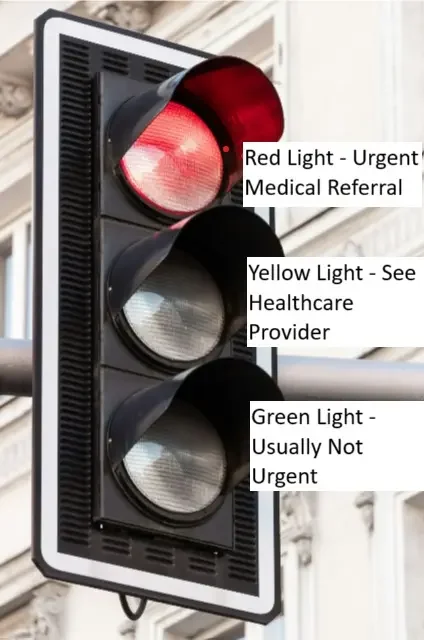North Vancouver Chiropractor’s guide to Managing Leg Pain
Leg pain can be caused by many things that can range from being totally harmless to more serious issues requiring medical assistance.
I’ve put a stop-light approach to decision making on how to best handle a leg injury, and in effect, when you may want to take the injury more seriously below. Of course, it’s best to use your own judgement and when in doubt, have it checked out.
Green light – usually not urgent
Mild muscle strain or general overuse – sore after exercise without an overt moment-in-time injury or after a long day of movement that the body isn’t accustomed to? It’s probably fine.
Minor injuries or bruising – if you’ve bumped the leg on something or have experienced a minor twist/tweak that you’re able to play/work through without a compromise in performance/activity.
Cramping discomfort – may be due to muscle fatigue, electrolyte imbalance/hydration status. This will often will go away on their own with rest, mild stretching and proper hydration strategies.
If the injury starts to improve after 48-72 hours (the approximate duration of the inflammatory phase of injury), keep calm and carry on with self care techniques that do not seem to worsen your symptoms (i.e. excessive foam rolling, etc.).
Yellow light – best to seek the input of a healthcare professional
Pain that doesn’t improve after a few days, or pain that is causing a significant impact on your ability to manage everyday activities such as walking, or job/sport-specific demands.
Numbness, tingling, and/or weakness – likely a nerve injury.
Swelling in one leg but not the other – this may help indicate the extent of an injury such as a mid/high grade muscle or ligament injury.
Recurrent injuries, even if they’re seemingly mild – there may be stability/mobility issues at or around the site of pain that is predisposing the area to repeated injury. It is best to have this assessed and addressed with appropriate treatment/rehabilitation.
Red light – seek immediate medical attention.
Sudden severe pain – particularly if the leg is swollen, red, warm, or tender. May indicate a vascular issue or infection.
Severe pain after trauma, inability to weight bear – may indicate a fracture, high-grade sprain/strain
Cold, pale, or blue leg – may indicate vascular issue.
Numbness or loss of muscle control – likely indicates a nerve injury in the leg or more centrally toward the spine.
Fever with leg pain – may indicate infection.
Leg pain with a history of heart disease, clotting issues, or recent surgery – may indicate urgent vascular injury.
Anything seemingly vascular in nature or has the potential to be an infection should be directed to the ER or urgent care. Nerve injuries, depending on their severity could be assessed by a physician in an ER/urgent care setting or by another paramedical practitioner with familiarity of nerve injuries and their management.
The practitioners at Mountain Health and Performance are well versed in managing musculoskeletal injuries of the leg and in the detection of other conditions that may warrant medical referral. If you have any questions or concerns regarding leg pain that you’re experiencing, feel free to reach out to any of our practitioners!
Dr. Matt Wentzell
BKin, MSc, DC, FRCCSS(C)
North Vancouver Sport Chiropractor

